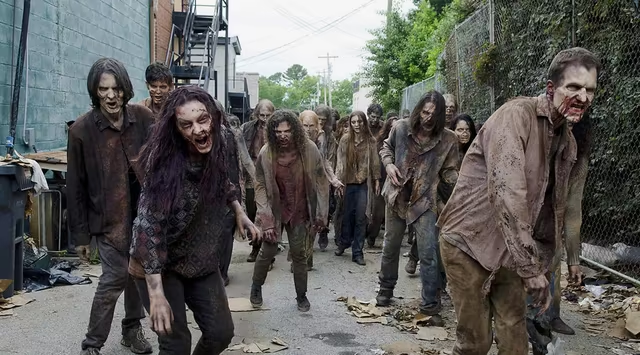If you click on a link and make a purchase we may receive a small commission. Read our editorial policy.
TV and Film ratings explained: What do they all mean?
Keeping everything age-appropriate.

How scary is a horror film? How steamy is a romance? Is that animated TV show appropriate for your young one? It can be tough to know what you’re getting into when it comes to watching the latest films and TV shows. Fortunately, there are ratings systems for both movies and TV in the US that can help you stay informed about what you and your family watch.
If you’re looking at the TV and film ratings and wondering what they mean, here is everything you need to know.
What do the MPAA film ratings mean?
There are currently five different ratings for films in the US, which are assigned by the Motion Picture Association of America (MPAA). Every movie that is released in American cinemas receives a rating based on its content. The MPAA content rating system consists of:
- G – General Audiences: All Ages Admitted.
- PG – Parental Guidance Suggested: Some material may not be suitable for children.
- PG-13 – Parents Strongly Cautioned: Some material may be inappropriate for children under 13.
- R – Restricted: Under 17 requires accompanying parent or adult guardian.
- NC-17 – Adults Only – No one 17 and under will be admitted.
G-rated films tend to be aimed directly at children. However, this classification of film is slowly being regulated by streaming services as more movies try to sneak some adult humor into the run-time. Films like Frozen, Trolls, and Shrek all earned a PG rating from the MPAA for their use of “rude humor” and cartoon violence.
Interestingly, the PG-13 classification was only introduced as studios added more violence to their otherwise family-friendly films. Movies like Indiana Jones and the Temple of Doom and Gremlins, which were rated PG at the time, pushed the boundaries around what the MPAA thought children should be exposed to, ultimately resulting in the creation of PG-13 films, which include movies like Barbie and some milder horror movies like Five Nights at Freddy’s.
An R rating denotes a movie that is clearly aimed at adult audiences. Most gory horror movies fall into this category, as do many violent action films like Die Hard and Commando. Language also plays a role in making a movie R-rated – famously, you can have one F-word in a PG-13 movie before it is reclassified as R.
It is rare to see an NC-17 movie in US cinemas simply because of their limited earning potential at the box office. These movies often contain heavy gore and violence, plus explicit sexual content.
What do US TV ratings mean?
Since the mid-90s, every film and show that is developed for US TV broadcast has been subject to a slightly different rating system. These guidelines were developed to mirror the MPAA’s rating system for films and to allow content restriction systems, such as the V-Chip, to restrict access to shows that parents didn’t want their children exposed to. The TV Parental Guidelines system consists of:
- TV-Y: Content designed to be appropriate for all children.
- TV-Y7: Content designed for children aged 7 and above.
- TV-G: Content designed for all ages but not necessarily aimed at children.
- TV-PG: Content that contains material parents may find unsuitable for younger children.
- TV-14: Content designed for audiences 14 and older.
- TV-MA: Content designed for adults that may be unsuitable for children under 17.
In addition to these ratings, five content descriptors can be applied to shows.
- D: Sexual or suggestive dialogue (Not used with TV-MA rated shows)
- L: Coarse or crude language
- S: Sexual situations
- V: Violence
- FV: Fantasy violence (This descriptor is used exclusively with the TV-Y7 rating)
Unlike the MPAA ratings, which are assigned by a single governing body after they have viewed the content, these TV ratings are voluntarily assigned by the networks themselves. This is because of the sheer quantity of television content broadcast each day. The same system is also used by streaming sites like Netflix and Disney+ to help standardize their content ratings with their broadcast counterparts.
Want to know what's coming up next in pop culture? Check out Popverse's guides to:
Follow Popverse for upcoming event coverage and news
Find out how we conduct our review by reading our review policy
Let Popverse be your tour guide through the wilderness of pop culture
Sign in and let us help you find your new favorite thing.















Comments
Want to join the discussion? Please activate your account first.
Visit Reedpop ID if you need to resend the confirmation email.